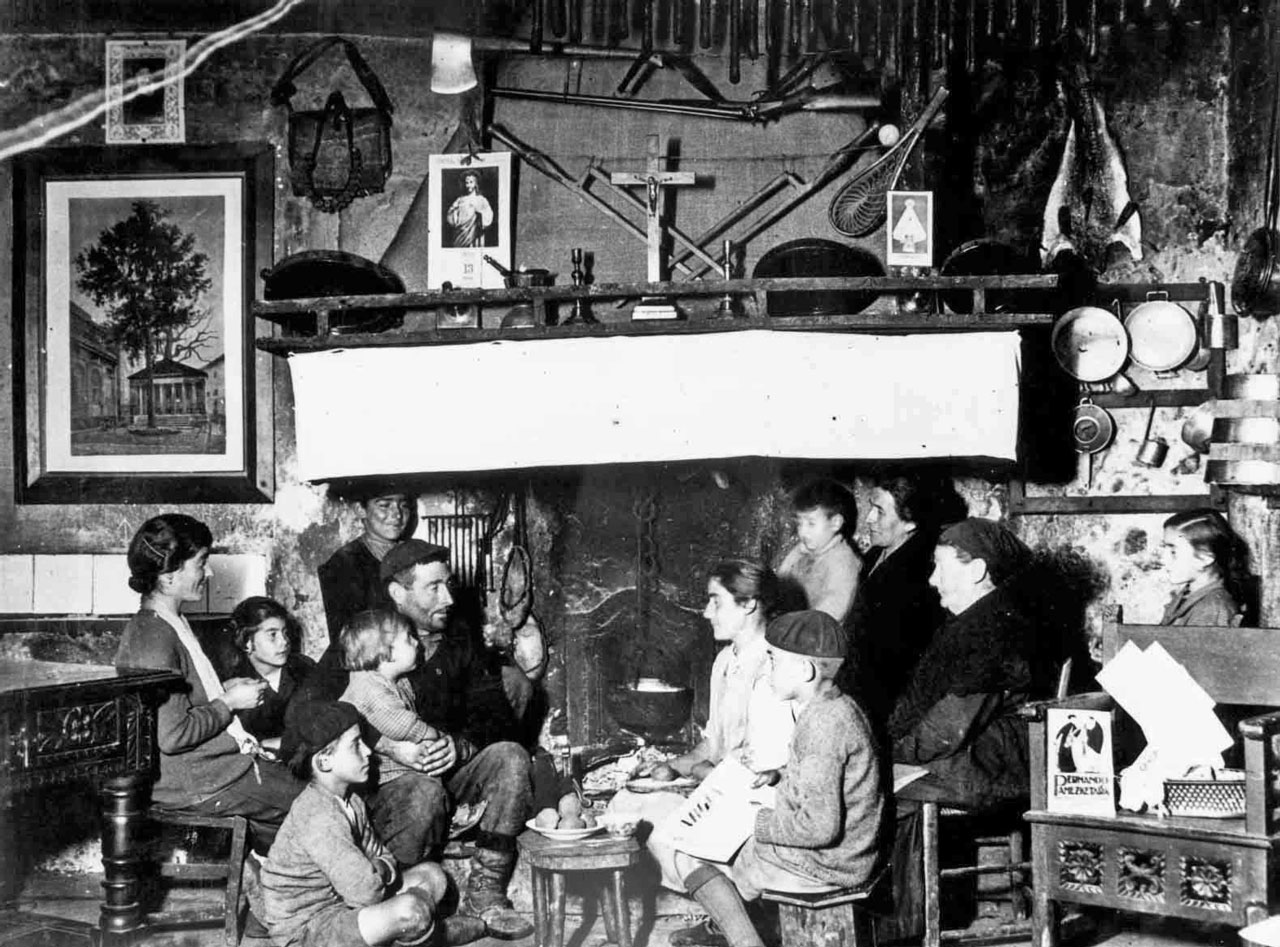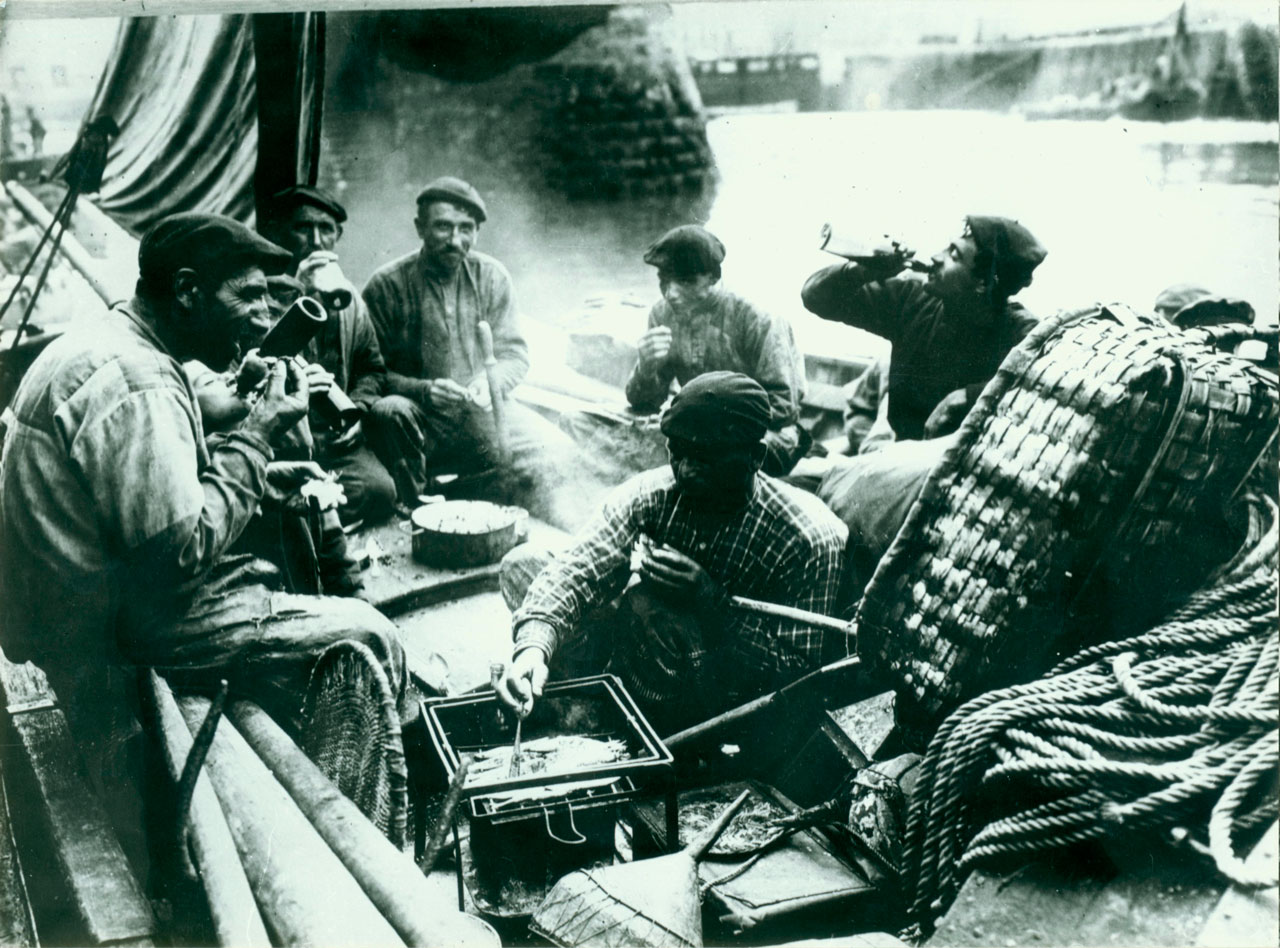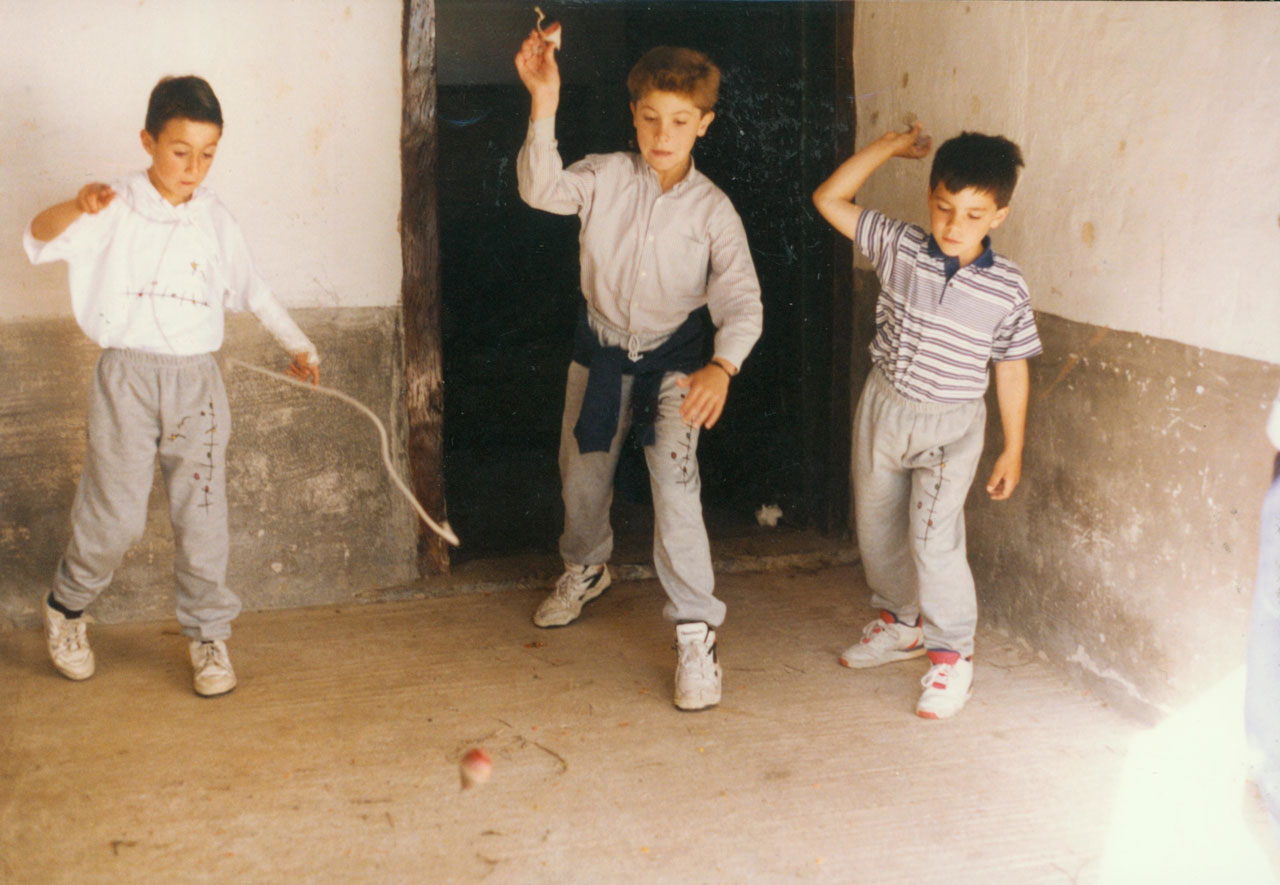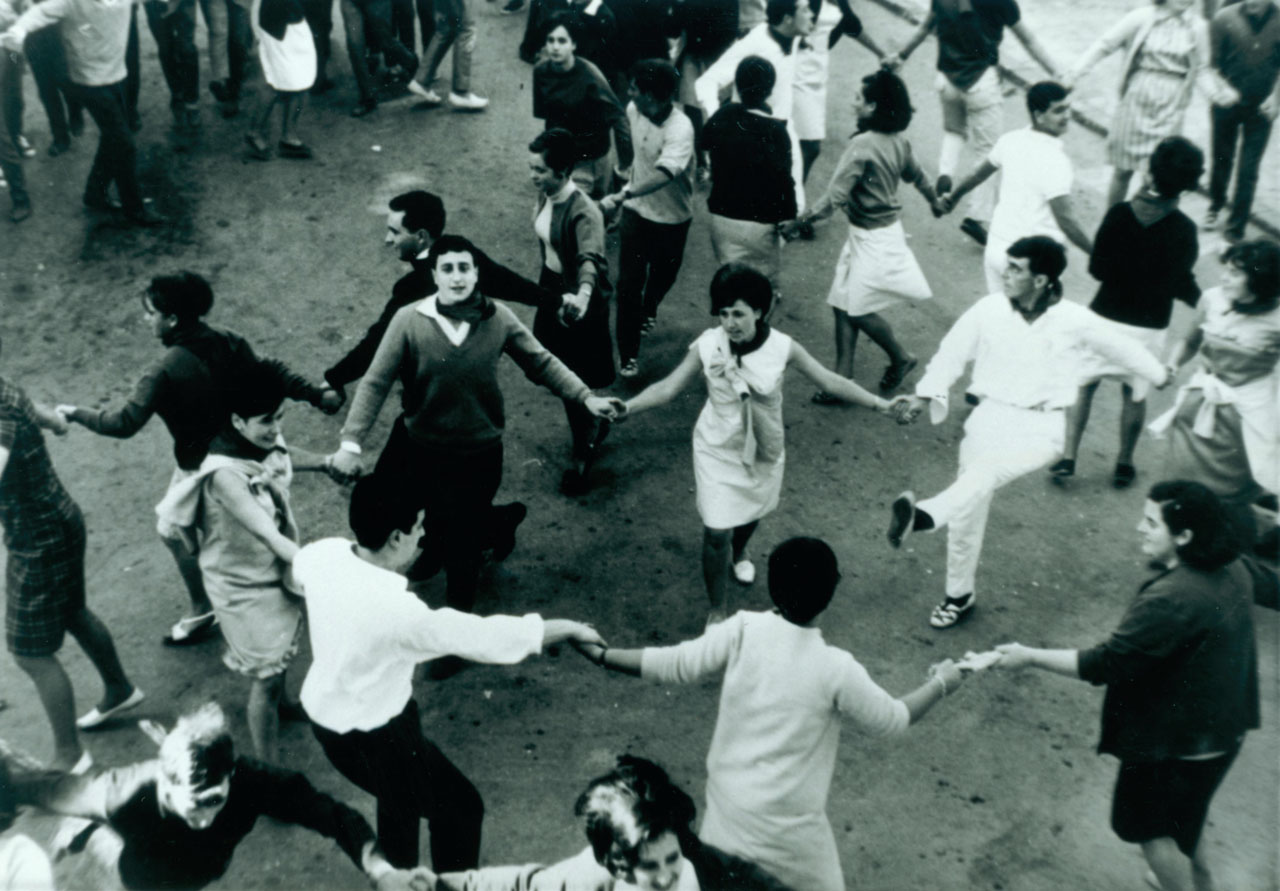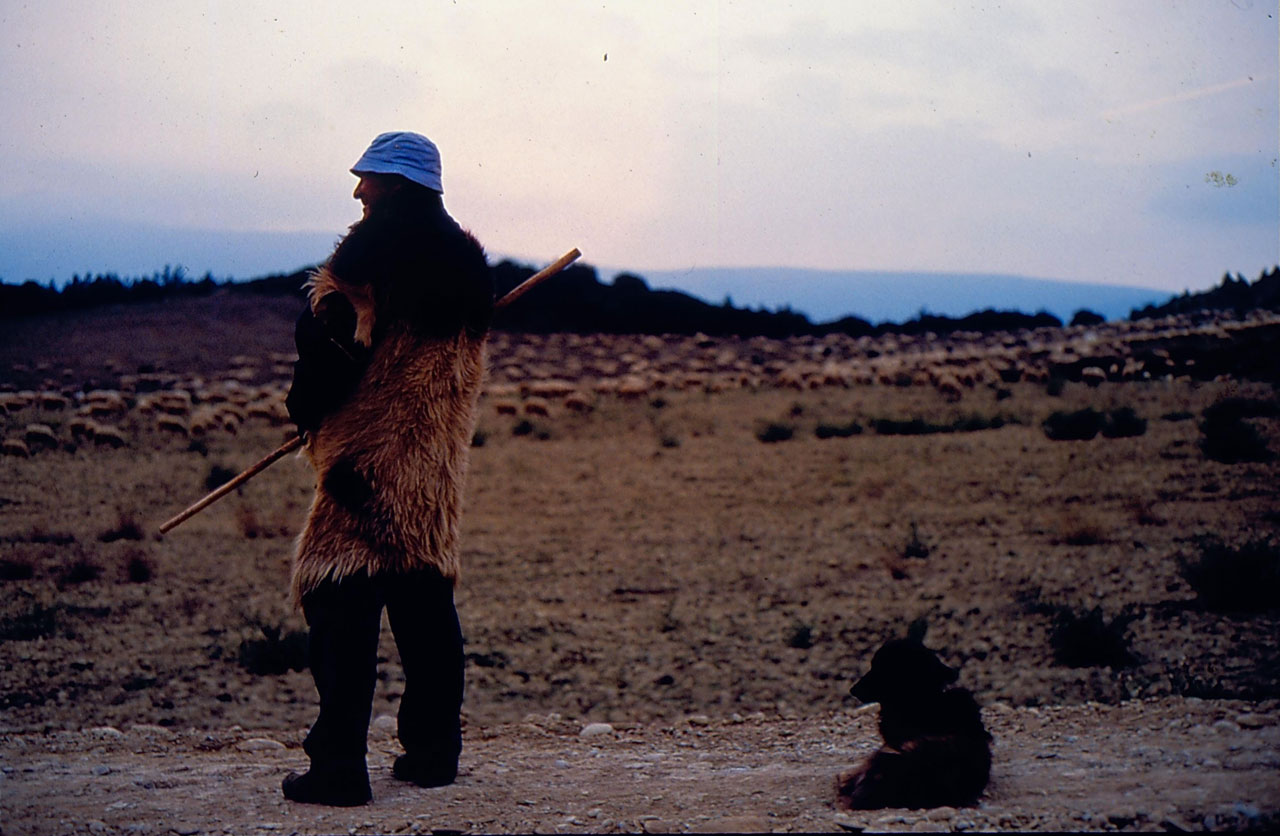Diferencia entre revisiones de «Main Page/en»
De Atlas Etnográfico de Vasconia
| Línea 104: | Línea 104: | ||
====[/atlas/juegos/A-chorro-morro.jpg|Leapfrog jumping. Source: Iñigo Irigoyen, José. Folklore Alavés. Vitoria-Gasteiz: Chartered Government of Álava, 1949.|''Astoka'' <br />One or more participants bend down in a position that is usually called a frog and the others jump over them.||]==== | ====[/atlas/juegos/A-chorro-morro.jpg|Leapfrog jumping. Source: Iñigo Irigoyen, José. Folklore Alavés. Vitoria-Gasteiz: Chartered Government of Álava, 1949.|''Astoka'' <br />One or more participants bend down in a position that is usually called a frog and the others jump over them.||]==== | ||
| − | ====[/atlas/juegos/ | + | ====[/atlas/juegos/Vestidos_y_adornos_vegetales_Egozkue_1967.png|Vegetal clothing and accessories. Egozkue (N), 1967. Source: José Zufiaurre, Etniker Euskalerria Groups.|Akerrak adarrak okerrak ditu, <br />adarrak okerrak akerrak ditu, <br />okerrak adarrak akerrak ditu. <br /><br />''Tongue-twister''||]==== |
====[/atlas/juegos/A-enfermeras-Getxo-1993.jpg|Doctors and nurses. Getxo (B), 1993. Source: Jon Elorriaga, Etniker Euskalerria Groups.|Txikia banintzen, handia banintzen, maiatzerako burutu nintzen. <br />''Riddle''||]==== | ====[/atlas/juegos/A-enfermeras-Getxo-1993.jpg|Doctors and nurses. Getxo (B), 1993. Source: Jon Elorriaga, Etniker Euskalerria Groups.|Txikia banintzen, handia banintzen, maiatzerako burutu nintzen. <br />''Riddle''||]==== | ||
| − | ====[/atlas/juegos/ | + | ====[/atlas/juegos/Umetxo-taldea_Zeanurin_aurrekoa_parrantolarekin_Zeanuri_1920.jpg|Group of children. Zeanuri (B), 1920. Source: Labayru Fundazioa Photograhic Archive: Felipe Manterola Collection.|Children in the traditional society, both in towns and in countryside, only really had the toys that they made themselves. Games were more common than toys, and the latter were just a basis for the former.||]==== |
====[/atlas/juegos/Ninos-con-patinetes-y-triciclos-en-la-Florida.jpg|Children riding scooters and tricycles at Florida Park. Source: Municipal Archive of Vitoria-Gasteiz: Ceferino Yanguas.|Humans play games throughout their lives; however, that activity has a clearly different role for children and adults.||]==== | ====[/atlas/juegos/Ninos-con-patinetes-y-triciclos-en-la-Florida.jpg|Children riding scooters and tricycles at Florida Park. Source: Municipal Archive of Vitoria-Gasteiz: Ceferino Yanguas.|Humans play games throughout their lives; however, that activity has a clearly different role for children and adults.||]==== | ||
| Línea 122: | Línea 122: | ||
====[/atlas/juegos/Asto-astoka-Zeanuri-1920.jpg|Leapfrog. Zeanuri (B), 1920. Source: Labayru Fundazioa Photograhic Archive: Felipe Manterola Collection.|—Arre, arre, <br />mandako, bihar Tolosarako, <br />etzi Panplonarako. <br />—Handik zer ekarriko? <br />—Zapata ta garriko. <br /><br />''Children’s chant''||]==== | ====[/atlas/juegos/Asto-astoka-Zeanuri-1920.jpg|Leapfrog. Zeanuri (B), 1920. Source: Labayru Fundazioa Photograhic Archive: Felipe Manterola Collection.|—Arre, arre, <br />mandako, bihar Tolosarako, <br />etzi Panplonarako. <br />—Handik zer ekarriko? <br />—Zapata ta garriko. <br /><br />''Children’s chant''||]==== | ||
| − | ====[/atlas/juegos/ | + | ====[/atlas/juegos/Zotzetara_Zeanuri_1993.jpg|Drawing of lots. Zeanuri (B), 1993. Source: Ander Manterola, Etniker Euskalerria Groups.|Txirristi-mirristi, gerrena, plat, <br />olio-zopa, kikili-salda, <br />urrup edan edo klik, <br />ikimilikiliklik. <br /><br />''Drawing lots chant''||]==== |
| − | ====[/atlas/juegos/ | + | ====[/atlas/juegos/Velando_el_sueno_1914.png|Watching over the child. Source: Novedades. Donostia, 1914.|Obabatxua lo ta lo, <br />zuk orain eta nik gero; <br />zeuk gura dozun orduren baten, <br />biok egingo dogu lo ta lo. <br /><br />''Lullaby''||]==== |
Revisión del 13:19 11 mar 2020
House and Family in the Basque Country


House and Family in the Basque Country
Gure etxean sua batzen, gure etxean aingeruak sartzen. Angels dance happily in a clean house.
Family Diet in the Basque Country


Family Diet in the Basque Country
Nahiz dala udea, nahiz dala negua, goizeko zortziretan, armozu ordua. Folk song
Children’s Games in the Basque Country


Children’s Games in the Basque Country
Changes in the adult world are also necessarily reflected in the children’s world. It should not be forgotten that those changes also affect the world of beliefs, convictions and rites underlying many traditional games; many of which would be stripped of meaning, some would fall into disuse, others would persist and would adapt to the new circumstances.
Traditional Medicine in the Basque Country


Traditional Medicine in the Basque Country
Osasun ona eukiteko, oiloekin ohera eta txoriekin jaiki. Early to bed and early to rise makes a man healthy, wealthy and wise.
Rites from Birth to Marriage in the Basque Country


Rites from Birth to Marriage in the Basque Country
Gazteak, badakizue zelan dantzan egin: burua gora-gora ta kaderai eragin. Folk verse
Funeral Rites in the Basque Country


Funeral Rites in the Basque Country
Cuando el cárabo canta, la muerte levanta. When the tawny owl hoots, death wakes up.
Herder and dog. Droveway of the Roncalese (N), 1996. Source: Iñaki San Miguel, Etniker Euskalerria Groups.
Livestock Farming and Shepherding in the Basque Country


Livestock Farming and Shepherding in the Basque Country
The introduction of sheepdogs meant they replaced the zagales, young children who had been in charge of herding the flock up to then.
Agriculture in the Basque Country


Agriculture in the Basque Country
Selecting seeds has always been a fundamental activity. The best seeds were chosen from each harvest, and they were then stored and used for the next sowing season.
